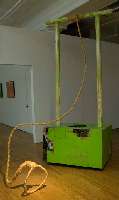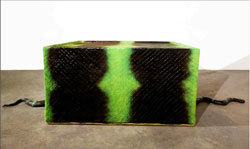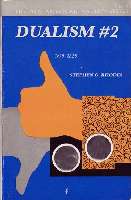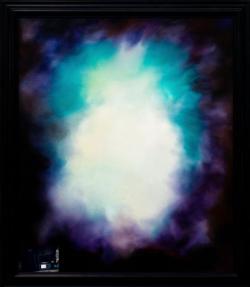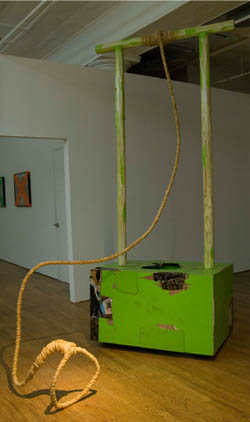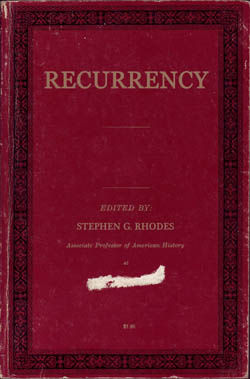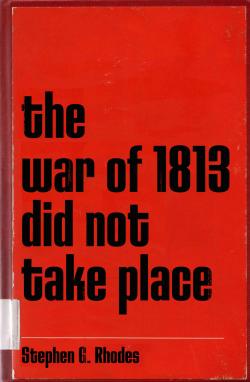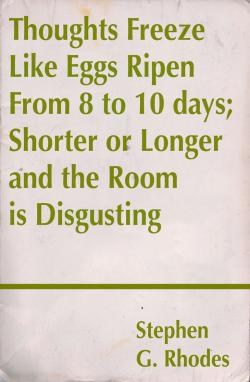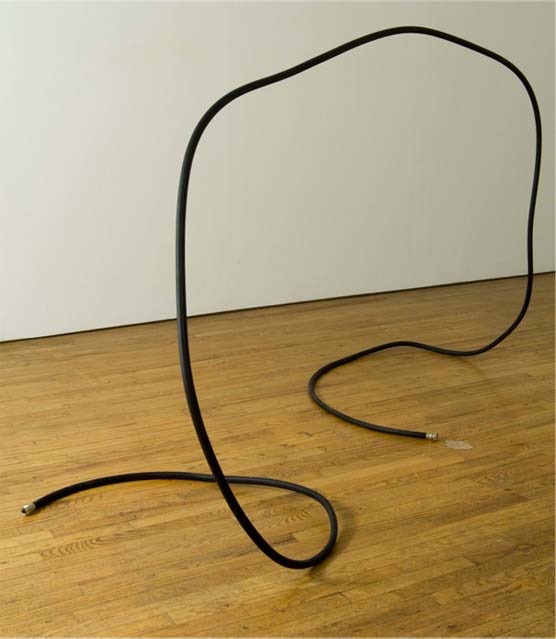

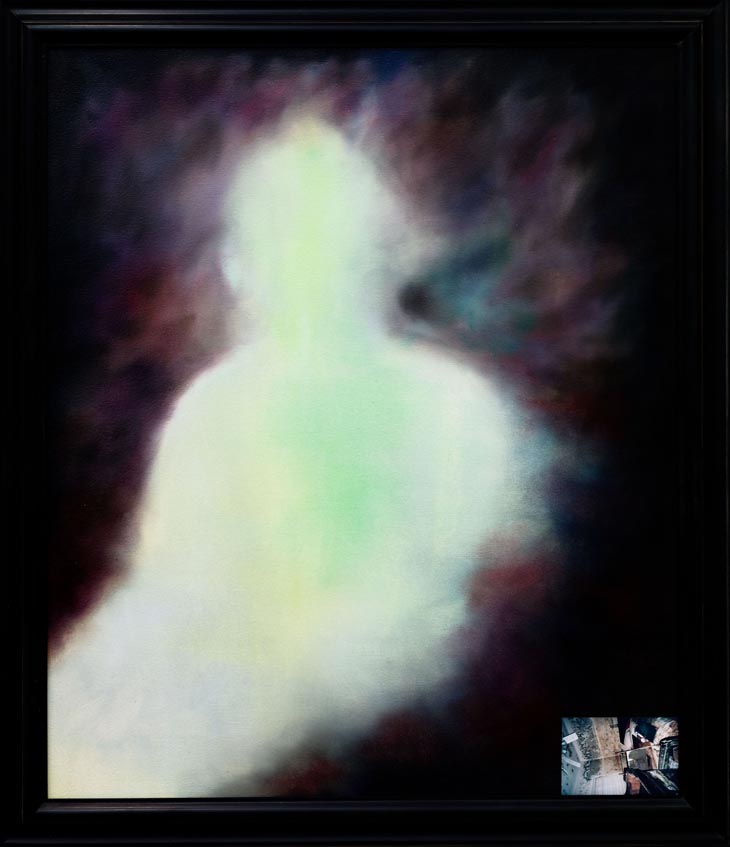

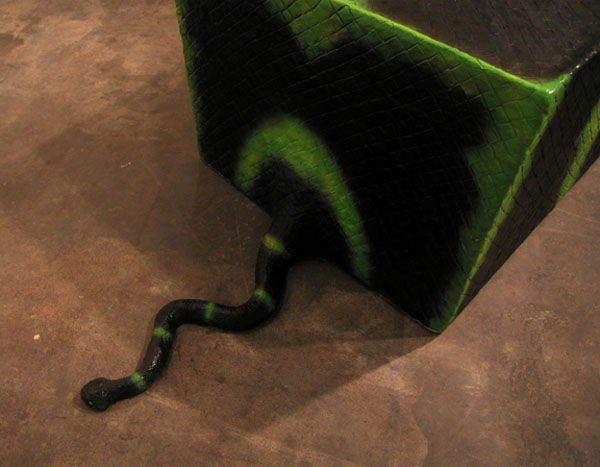
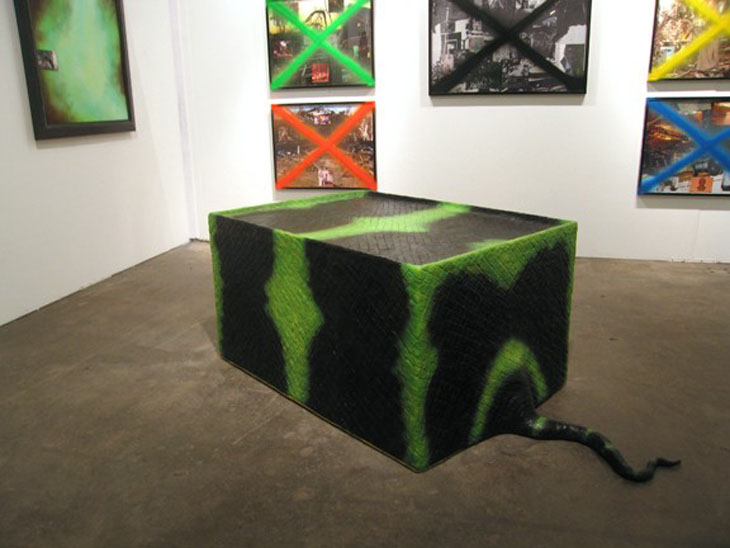
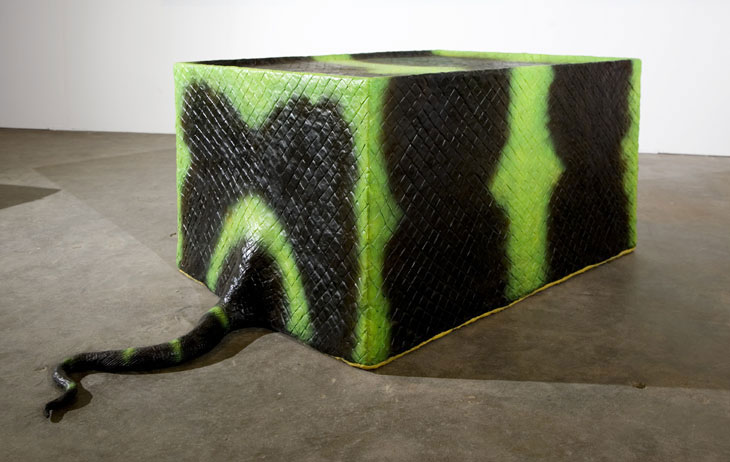

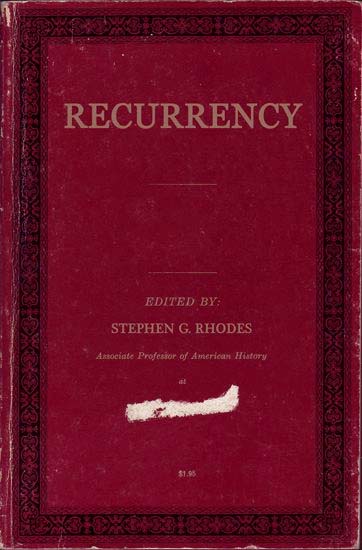
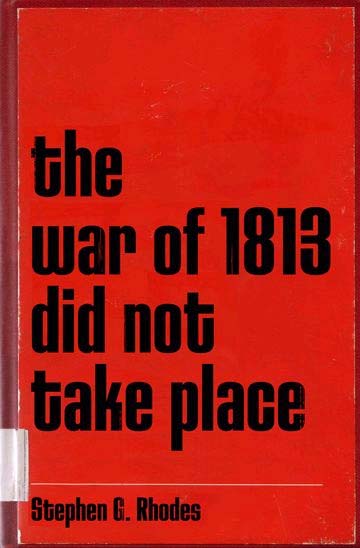
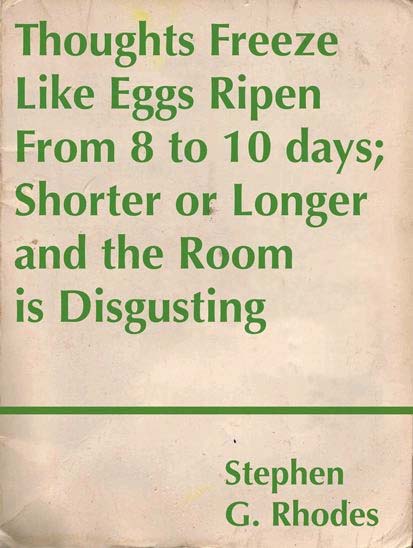
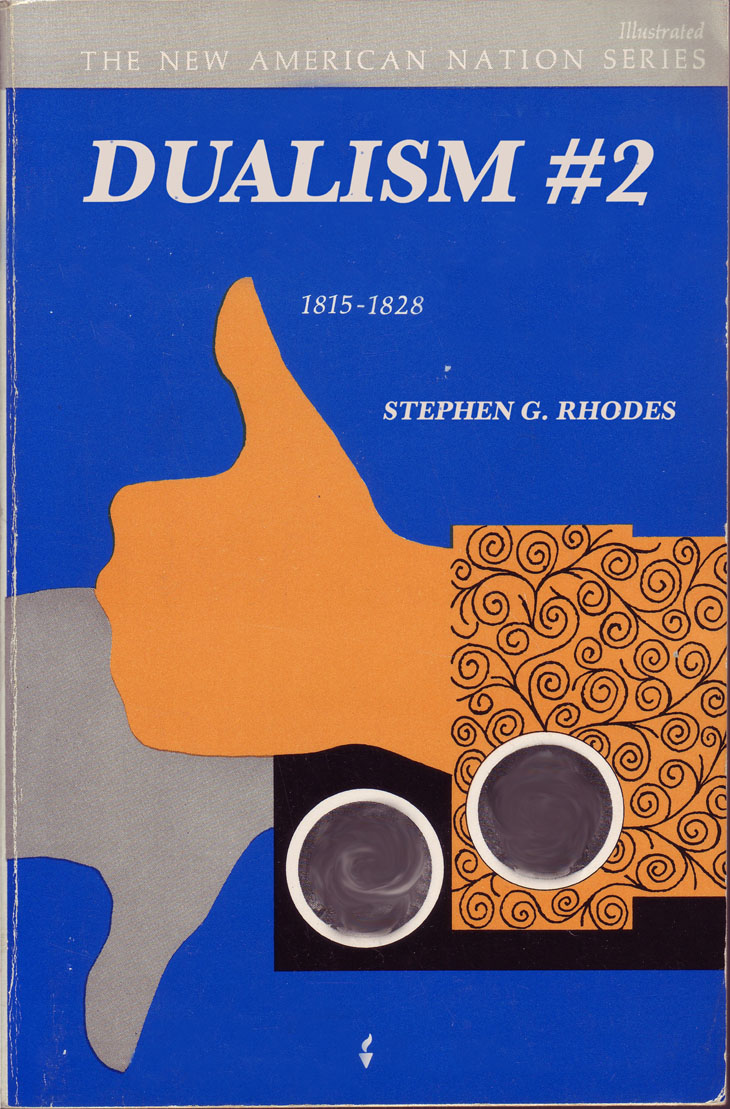
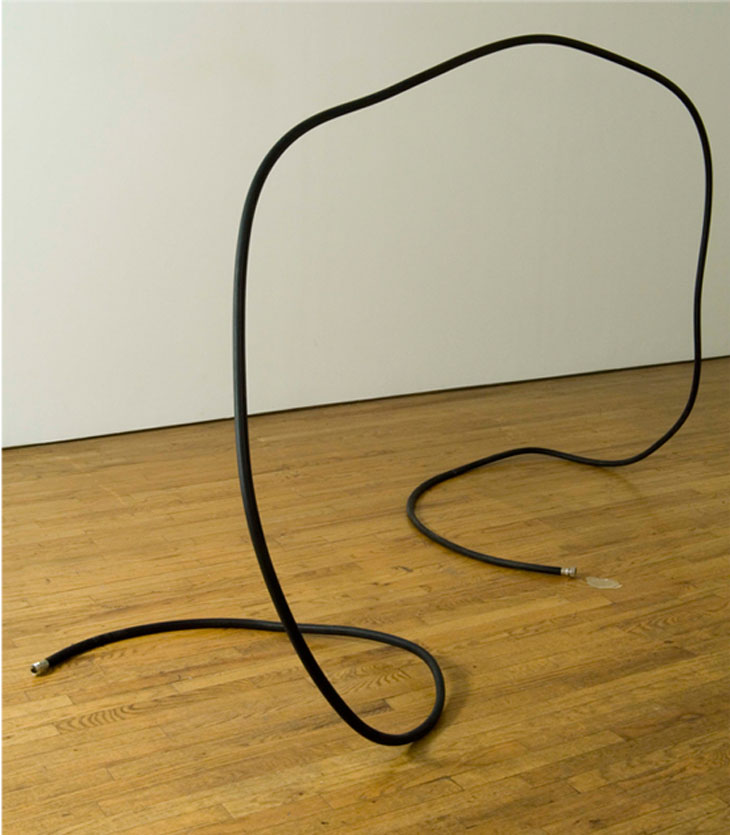

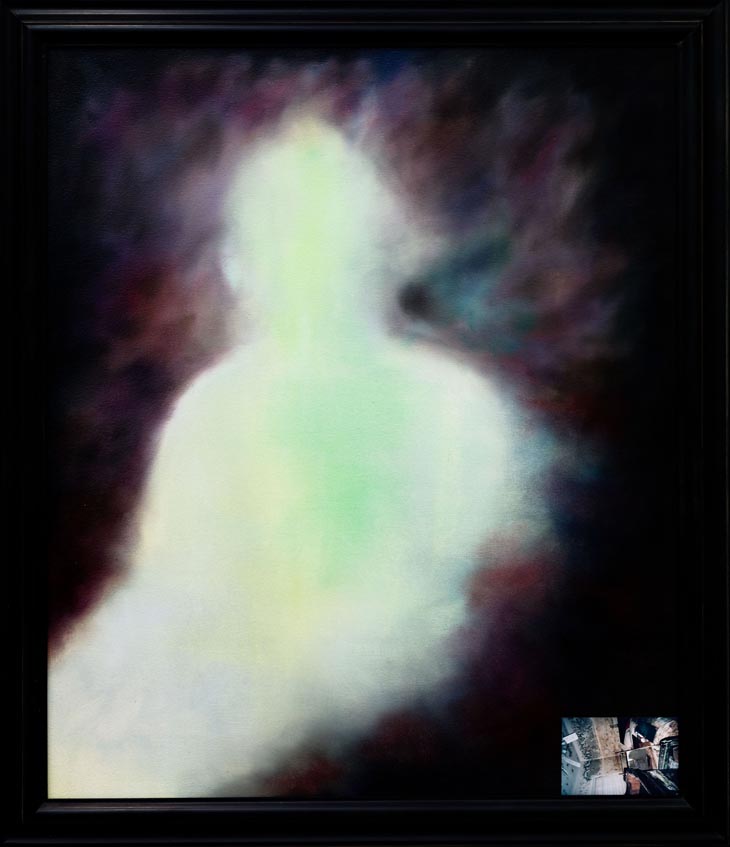
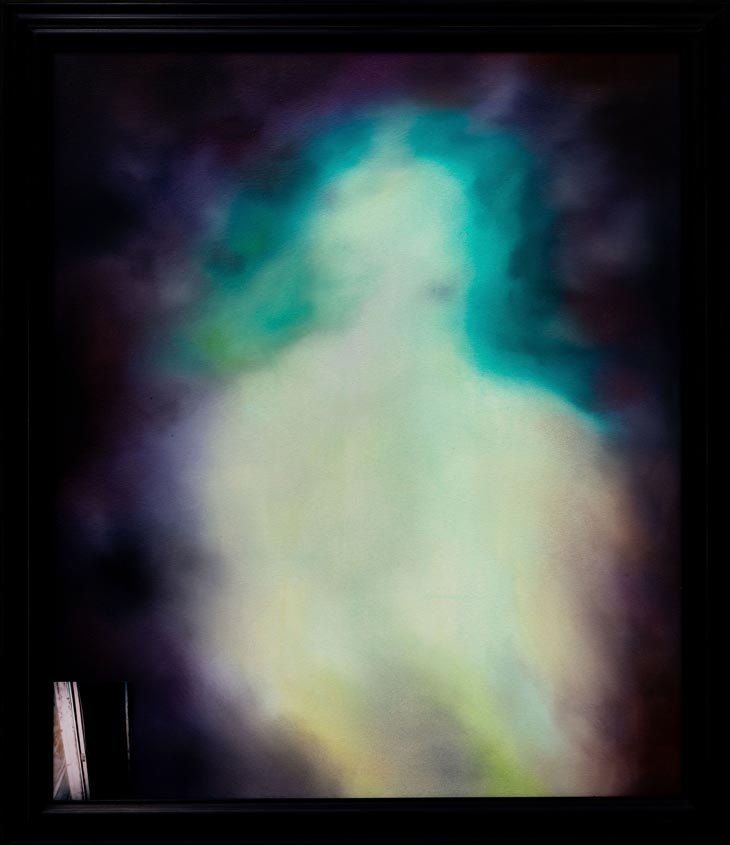




Stephen G. Rhodes
Through his sculptures and installations Stephen G. Rhodes engages with both art historical and American mythology to approach narrative through making. In Ssspecific Object, Rhodes
comically merges these two interests with the suggestion of a minimalist cube devoured by a giant snake; its title referring to Donald Judd’s critical writings and its awkward horizontal composition reinforcing its creepy otherness. Made from rubber and stretched to capacity, Rhodes’s serpent poses as a discriminate consumer: a viper critic devouring the bulk feast of modernism.
Printed in the size of public sector posters, Stephen G. Rhodes’s photographs wittily rewrite history, presenting images of fictional text book covers, each proffering a subversive title and his own claim of authorship. Making reference to the post-colonial American lore, Rhodes humorously explores the malleability of historical fact and national identity, drawing connotations to and critique of contemporary myth-making, manifest destiny and cultural production.
Stephen G. Rhodes sculptures operate as individual artworks in themselves, though are often created as part of a larger narrative project or solo exhibition. In these exhibitions, his works create a dialogue with each other, bringing together various aspects of a story or theme. Made in conjunction with his Recurrency project, Hosergeisten Black 1 symbolically references both rope and water. Constructed from a simple garden hose Rhodes’s Hosergeisten Black 1 arches in free standing elegance, creating an articulate gesture defiant in its suggestion of motion and resistance of gravity.
Themes of memory, trauma, and historical unconscious are recurrent throughout Stephen G. Rhodes’s work. Rhodes’s Vacant Portraits use as their reference point historical portrait paintings in which the sitter is depicted in front of an abstract background. By removing the image of the sitter, Rhodes’s paintings record only a lingering atmosphere of spectral presence, negating the past and suggesting a haunted present. The small photographs placed in the corners are of abandoned sites in New Orleans after Hurricane Katrina, the barren rooms and anonymous detritus redoubling the vacant aura.
ARCHIVE: PAST WORKS
Stephen G. Rhodes Recurrency project was based on a film shown as part of his grade school curriculum. Based on a story by Ambrose Bierce, An Occurrence At Owl Creek (1962) chronicles the escape of a prisoner in the last moment before hanging; just as he returns to his home and wife, the film cuts to his death on the gallows – the story of the escape being the man’s final fantasy. Rhodes’s Recurrency consists of video, sculpture, installation, and drawing; Gallows Resistancy Recurrency is one of the primary pieces of this body of work.
Gallows Resistancy Recurrency embodies sensations of temporary reprieve. Taking the form of a makeshift execution platform, the impoverished based is smashed through with perfunctory violence, and paint is peeled away to reveal photographic elements, suggestive of both media and memory. The rope swoops forth, frozen in a line of both flight and pursuit; its empty noose is spot lit offering a divine hope in the promise of escape.

